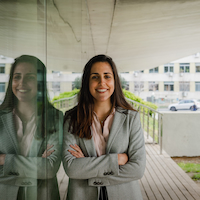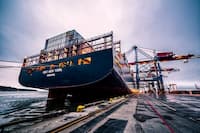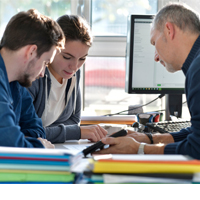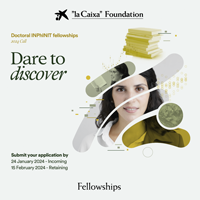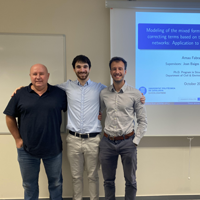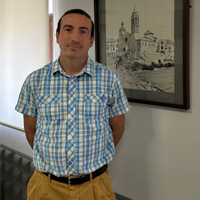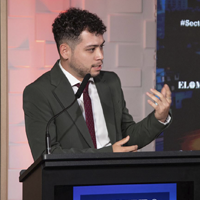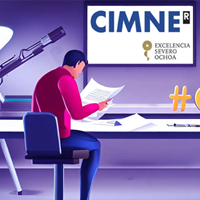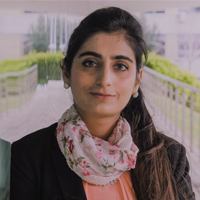research
Interview to Fabiola Cavaliere: Pioner Award Winner 2022
Recently, Fabiola Cavaliere has been awarded with a Pioner Award by CERCA institution in recognition of her PhD thesis, which was co-directed by the leader of the Credible data-driven models research group at CIMNE, Pedro Díez, jointly Rubén Sevilla (Swansea University) and Sergio Zlotnik (UPC/Lacàn).
From 2018 to 2022, Fabiola Cavaliere was a researcher PhD Candidate at CIMNE, funded by the Marie Curie Programme. Her PhD involved academic institutions (UPC/CIMNE and the Swansea University) and an industrial partner: SEAT, SA. The programme included a stay at the automobile company, which Cavaliere has joined as a AI Structural Simulation Engineer after her PhD.
-The Pioner awards recognize those researchers from a CERCA centre who have just produced a doctoral thesis with clearly market-oriented results. You did a Marie Curie PhD programme outcome of the collaboration between universities (UPC/Swansea), a research centre (CIMNE) and a company (SEAT). Why do you think it is important to encourage the knowledge transfer from universities and research centres to the industry?
One of the reasons why I decided to start my doctorate within the Marie Curie programme was the opportunity to come into contact with both the academic world and the industry. After this experience, I am even more convinced that the exchange of knowledge between these two worlds is urgent and crucial in order to accelerate the path towards innovation.
Industry and academia have a clear objective in common: to satisfy the needs of our society. However, I believe that there is still a lack of real collaboration between them. As a consequence, academia ends up developing new methods that, many times, industry does not have the time, resources or adequate profiles to be able to introduce them in their processes.
At the same time, academics do not always have the opportunity to get in touch with industry experts to understand what processes are relevant to them. In my experience, precisely this collaboration between academia and industry was the key to the success of my project, thanks, above all, to my supervisors; Prof. Pedro Diez and Prof. Sergio Zlotnik (CIMNE/UPC); Prof. Ruben Sevilla (Swansea University) and Dr. Xabier Larrayoz (SEAT). I am sure that without their knowledge from different fields of competence we would not have reached the same results.

Fabiola Cavaliere receiving the award during the ceremony
-After your doctorate, you joined SEAT. Why do you think it is important incorporate doctorates to industry?
My incorporation into SEAT has been strongly motivated by the promising results obtained during my PhD. The developed methodology has shown a strong potential for improvement of certain industrial processes involved in the construction of a vehicle. Thanks to the support of my supervisor Dr. Larrayoz and the simulation area of the SEAT Technical Center, the company has decided to bet on my hiring, a fact for which I am truly grateful. In cases like mine, I think it is interesting for the industry not to lose the knowledge acquired during the research work.
More widely, I believe that PhDs can represent an important source of innovation for the industry: through training, they learn to constantly face the challenge of seeking new strategies. In addition, the presence of doctorates can encourage the collaboration with the world of academia, for example, through projects like the one I was involved in. In this way, it is possible to improve the company's internal know-how and generate new solutions without taking time or resources from the daily product development activities.
-Your doctoral thesis "Static and dynamic global stiffness analysis for automotive pre-design", has received the CERCA Pioneer Award. It is focused on the optimization of the design process of the structure of automobiles. What are its main advantages in practice?
My project aims to optimize the design process of a car structure. Today, it takes an average of three/four years to develop a new vehicle due to its high complexity. Engineers have to find the perfect configuration out of millions of possibilities so that all requirements are fulfilled. To achieve this goal, the industry continues to use the trial-and-error method, iterating many times the design of the structure and simulating its behavior through complex numerical calculations, until a satisfactory solution is found.
My method is based on a Machine Learning technique that avoids these continuous iterations and allows exploring a wide range of configurations from the preliminary phase of the project. The advantages are multiple: to reduce development times, to create a synergy between simulation designers and engineers to speed up the decision-making process and to analyze many more configurations than we normally have the time to consider. Finally, the method aims to improve driving comfort levels without affecting the weight of the car. The latter is a fundamental parameter in the actual challenge of mobility electrification: a reduction in weight helps to increase the autonomy of electric vehicles and offer a better product to potential customers.
-What are the most substantial differences between the academic world and the business world?
The world of academia is focused on the search for new strategies. Often, an initially promising idea can lead to inconclusive but useful results to discard options and move towards the right solution to the problem. Industry tends to work at a faster pace and needs to invest its resources in economically sustainable processes, which can sometimes put some limits on research. At the same time, thanks to its large and complex structure, the world of industry has the necessary resources to implement highly interdisciplinary and advanced projects.
Normally, academic activity tends to be more individual, while in industry, teamwork is an essential aspect to get successful results. This requires sharing tasks and functions, and being aware of the consequences that these may have on the whole process.
Personally, one of the things I like most about working in industry is having direct contact with the product I am working on and being able to contribute directly to its development.

